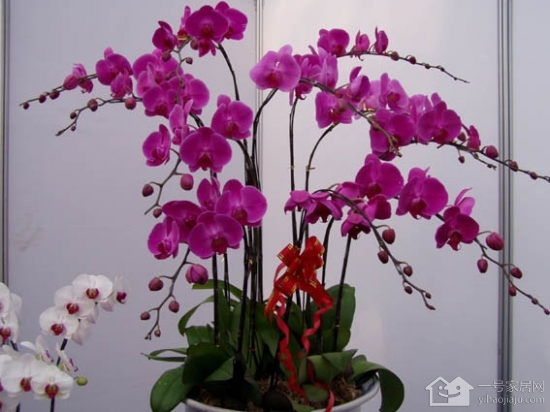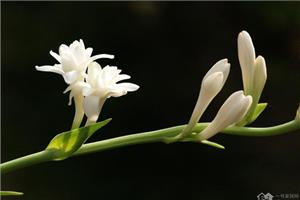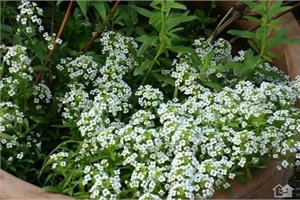How to maintain Phalaenopsis what are the maintenance methods of Phalaenopsis
Phalaenopsis has a beautiful and elegant flower posture. The graceful flower stem crane stands on the bright green leaves, the blooming flowers are like colorful butterflies, gorgeous and elegant, pleasing to the eye, a flower in the room full of spring, beautiful. So how to maintain Phalaenopsis? Let's take a look at the conservation methods of Phalaenopsis.

I. growth habits
Phalaenopsis was born in the tropical rain forest, the nature likes to be warm and afraid of cold. The suitable temperature for growth is 15 ℃ 20 ℃. In winter, it will stop growing when it is below 10 ℃, and it is easy to die if it is less than 5 ℃. Phalaenopsis, which is native to tropical Malaysia, belongs to the genus Phalaenopsis of Orchidaceae and is a perennial herb. The forest trees along the shores of hot and humid rivers are the places where Phalaenopsis grows. Phalaenopsis can protect itself from stress in low humidity because of its physiological structure, but in too humid environment, high temperature and high humidity are often accompanied by diseases. The most suitable range of relative humidity is 60%--80%RH.
II. Conservation methods of Phalaenopsis
1. Planting
When potted Phalaenopsis, the bottom of the pot should be filled with permeable matrix, and the seedlings of Phalaenopsis should be planted in the pot with the bryophytes of 1 and 3 and the fern roots of 2 and 3, and then pressed slightly so that the seedlings can be fixed in the pot. If potted with moss completely, the moss soaked in water should be squeezed dry and wrapped loosely in the lower part of the root of the orchid seedling, gently pressed, but the moss should not be pressed too tightly, because the moss absorbs too much water, and if pressed too tightly, it will cause root rot.
2. Change the basin
The best time to change pots is in late spring and early summer, just after flowering and when new roots begin to grow. The temperature should not be too low when changing the basin. A little carelessness in management will lead to the death of rotten roots. Small seedlings of potted plants should be gradually changed into larger pots according to their growth conditions, and small seedlings should be planted directly in large pots. It is not necessary to remove the original cultivation substrate in order to avoid root damage. Just wrap a layer of moss or other potted substrate around the root, plant it in a larger basin, and make the neck part of the root consistent with the height of the pot edge. The seedlings with good growth can be changed once every 6 months. After changing pots, the plants should be placed in a shaded place within two weeks. During this period, no fertilizer can be applied, but only spraying or proper watering.
3. Light and shade
Outdoor orchid cultivation needs shading, 70% Murray 80% in summer, 50% Murray 60% in spring and autumn, and 40% Mui 50% in winter. Shading materials include shading nets, curtains, or self-made wood strips and bamboo shelves. The self-made shading frame should be 4 meters wide and 3.3 meters apart, and should be about 1 meter above the orchid basin. Put indoors, Phalaenopsis can be placed in a place where the near light is good, and curtains can be used to cover the light when the strong light is shining. Pay attention to ventilation, and you can still keep it well.
4. Fertilizer and water management
Phalaenopsis fertilization is basically combined with watering, generally dissolving a large number of elements and trace elements in water according to proportion, adjusting the pH to slightly acidic, and then spraying the whole plant, the concentration is 0.1% Mui 0.2%, and it is best to use chemical fertilizer that can be absorbed directly by the plant. The planting density of Phalaenopsis is 20 murmur32 plants per square meter and planted at equal intervals. Watering after planting is mostly carried out by spraying water. Soft water should be used for spraying water to prevent the scale on the leaf surface from affecting the growth. Spraying water not only watered the plant but also increased the air humidity, which was beneficial to the growth and development of the plant. Phalaenopsis should be watered properly and not too much. The temperature is too high or too low, and the air temperature is too dry or too wet. Fertilization should follow the principle of "thin fertilizer, small amount and diligent application". In order to cultivate Phalaenopsis, aquatic plants and moss are generally selected as the cultivation substrate. The principle of fertilization should be less fertilization and light fertilizer. In the normal growing period, 2000 times of special orchid fertilizer was applied to fertilize the roots. According to the growth condition, 2Mel was applied once every 3 weeks. Before flowering, Phalaenopsis can be sprayed once every 10 days with 1000 murmur2000 times of compound flower fertilizer, which is mainly composed of water-soluble high-phosphorus and potassium fertilizer. Stop applying fertilizer at flowering stage and in the season with lower temperature.
The above is the relevant introduction of this article, I believe you have a simple understanding of this after reading it, if necessary, you can continue to pay attention to the No. 1 home network for more information.
Related
- Wuhan Hospital Iron Tree Blooming Result Was Instantly Frightened by the Gardener Master
- Which variety of camellia is the most fragrant and best? Which one do you like best?
- What is the small blue coat, the breeding methods and matters needing attention of the succulent plant
- Dormancy time and maintenance management of succulent plants during dormancy
- Minas succulent how to raise, Minas succulent plant pictures
- What are the varieties of winter succulent plants
- How to raise succulent plants in twelve rolls? let's take a look at some experience of breeding twelve rolls.
- Attention should be paid to water control for succulent plants during dormant period (winter and summer)
- Watering experience of twelve rolls of succulent plants
- Techniques for fertilizing succulent plants. An article will let you know how to fertilize succulent plants.



